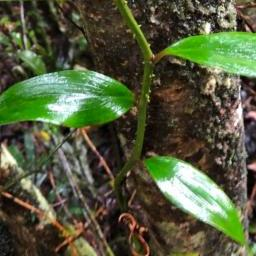
Petermannia is the sole genus of plants in the family Petermanniaceae. Petermannia cirrosa, the only species in the genus, is endemic to the states of New South Wales and Queensland in Australia. it is a prickly, wiry stemmed vine which grows to 6 metres in height and has lancelote, ovate or elliptic leaves with an acute apex. The flowers, which appear during summer, have reflexed reddish green or white tepals. These are followed by rounded red berries.

Favartia cirrosa is a species of sea snail, a marine gastropod mollusk in the family Muricidae, the murex snails or rock snails.

Julodis cirrosa, the brush jewel beetle, is a species of beetles belonging to the Buprestidae family. This species occurs in Southern Africa.

Desmiphora is a genus of longhorn beetles of the subfamily Lamiinae, containing the following species:
Desmiphora neoflavescens is a species of beetle in the family Cerambycidae. It was described by Galileo and Martins in 1998. It is known from Brazil.
Desmiphora santossilvai is a species of beetle in the family Cerambycidae. It was described by Galileo and Martins in 2003. It is known from Brazil and French Guiana.
Desmiphora auatinga is a species of beetle in the family Cerambycidae. It was described by Martins and Galileo in 1996. It is known from El Oro: Machala Ecuador.
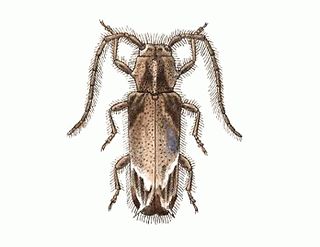
Desmiphora canescens is a species of beetle in the family Cerambycidae. It was described by Henry Walter Bates in 1874. It is known from Colombia, Mexico, and Venezuela.
Desmiphora lineatipennis is a species of beetle in the family Cerambycidae. It was described by Stephan von Breuning in 1943. It is known from Argentina.
Desmiphora picta is a species of beetle in the family Cerambycidae. It was described by Stephan von Breuning in 1943. It is known from Argentina.
Desmiphora rufocristata is a species of beetle in the family Cerambycidae. It was described by Melzer in 1935. It is known from Brazil.
Desmiphora x-signata is a species of beetle in the family Cerambycidae. It was described by Melzer in 1935.
Desmiphora bijuba is a species of beetle in the family Cerambycidae. It was described by Giesbert in 1998. It is known from Mexico.
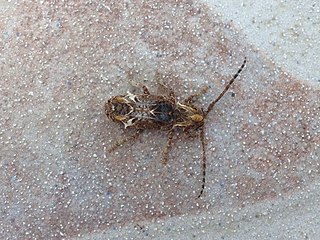
Desmiphora hirticollis is a species of beetle in the family Cerambycidae. It was described by Guillaume-Antoine Olivier in 1795. It has been found from the United States to South America, including the Galapagos Islands, Puerto Rico, Jamaica, and the Caribbean.
Desmiphora maculosa is a species of beetle in the family Cerambycidae. It was described by Linsley and Chemsak in 1966. It is known from the Galapagos Islands.
Desmiphora travassosi is a species of beetle in the family Cerambycidae. It was described by Mendes in 1938. It is known from Brazil.
Platysace cirrosa, commonly known as karna, is a twining, perennial herb or climber that is endemic to the south-west of Western Australia. The Noongar name for the plant is kanna. It is leafless, sometimes with a few very small scale-like leaves, and flowers arranged in umbels with overlapping yellow petals and flattened fruit.
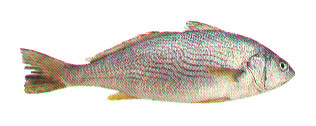
Umbrina is a genus of fish from the croaker family Sciaenidae. The genus contains 17 species occurring in tropical and warm temperate waters of the Atlantic, the Mediterranean, the Western Indian Ocean and the eastern Pacific.
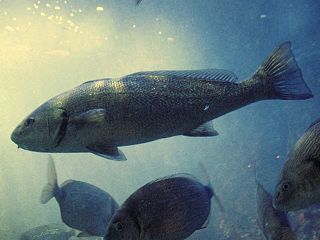
Umbrina cirrosa, the shi drum, is a species of marine fish from the warmer waters of the eastern Atlantic Ocean, Mediterranean Sea and the Black Sea. It is a commercially important species which is trawled for and farmed in aquaculture, as well as being a species pursued by anglers and spear fishermen for sport. The alternative vernacular names are gurbell, sea crow, bearded umbrine and corb.
Mecas cirrosa is a species of longhorn beetles found in Mexico. It was described by Chemsak and Linsley in 1973.








